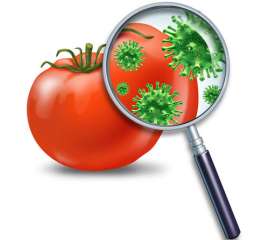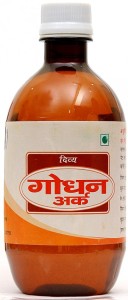Time to kick some butt at practice.
Yearly Archives: 2015
More turtles, more Salmonella
You see a cute reptile, I see a Salmonella factory.
 The U.S. Centers for Disease Control, multiple states, and the U.S. Food and Drug Administration Center for Veterinary Medicine investigated two multistate outbreaks of human Salmonella infections linked to contact with small turtles in 2015.
The U.S. Centers for Disease Control, multiple states, and the U.S. Food and Drug Administration Center for Veterinary Medicine investigated two multistate outbreaks of human Salmonella infections linked to contact with small turtles in 2015.
51 people infected with the outbreak strains of Salmonella were reported from 16 states between January 22, 2015 and September 8, 2015.
15 ill people were hospitalized, and no deaths were reported.
50% of ill people were children 5 years of age or younger.
Epidemiologic and laboratory findings linked these two outbreaks of human Salmonella infections to contact with small turtles or their environments, such as water from a turtle habitat.
All turtles, regardless of size, can carry Salmonella bacteria even if they look healthy and clean. These outbreaks are a reminder to follow simple steps to enjoy pet reptiles and keep your family healthy.
Wash hands thoroughly with soap and water immediately after handling turtles or anything in the area where they live or roam.
Since 1975, the Food and Drug Administration has banned the sale and distribution of turtles with a shell length of less than 4 inches in size as pets because they are often linked to Salmonella infections, especially in young children.
Small turtles should not be purchased as pets or given as gifts.
CDC’s National Antimicrobial Resistance Monitoring System (NARMS) laboratory conducted antibiotic resistance testing on Salmonella isolates collected from seven ill people infected with one of the outbreak strains.
All seven isolates were susceptible to all antibiotics tested on the NARMS panel.
The outbreak is expected to continue at a low level for the next several months since consumers might be unaware of the risk of Salmonella infection from reptiles, including small turtles. If properly cared for, small turtles have a long life expectancy.
Contrition after getting caught
My latest column from Texas A&M’s Center for Food Safety.
(I quite appreciate the freedom I have to delve into more substantive issues).
The VW microbus: popular in an Arlo Guthrie song (Alice’s Restaurant), home to shag carpeting, and where people who came of age in the 1970s actually did that – in a VW microbus.
But with news that Volkswagen rigged emission tests on some 11 million cars, the favored brand of professors and hipsters is collapsing.
And they’re not helping their cause.
At a corporate event to unveil the new Passat, the U.S. president of VW said, “Let’s be clear about this. Our company was dishonest. And in my German words, we have totally screwed up.
“Thank you very much for coming, enjoy the evening, up next is Lenny Kravitz.”
Or as comedian and British export John Oliver summarized:
“VW: Hitler trusted us, why won’t you?”
There’s a playbook for public contrition – even in the 140 characters of the Twitterverse — but it’s the day-in-day-out delivery that builds trust, in relationships with that person you met in a VW microbus or with global conglomerates.
Or that homespun ice-cream or peanut paste producer.
Blue Bell ice cream has done a lousy job of taking seriously their food safety responsibilities. Executives at Peanut Corporation of American, whose products killed nine and sickened at least 741 in 2009, received prison sentences varying from 28-to-three years for a not-so elaborate scheme to, as reported by USA Today and others over the years, “fabricate certificates of analysis in a scheme that falsely showed peanut butter from the Blakely, Georgia plant was free of Salmonella and other pathogens. In fact, there had been no testing of the product, or tests had confirmed contamination, prosecutors showed.”
Before the judge issued the sentences, former CEO Stewart Parnell said; “This has been a seven-year nightmare for me and my family. I’m truly, truly sorry for what’s happened.”
Parnell’s daughter said they never knowingly endangered customers, adding,
“No one thought that the products were unsafe or could harm someone. Dad brought them home to us. We all ate it.”
That’s from the contrition playbook. And it’s not enough.
Today, as the number of people sick with Salmonella from Mexican cucumbers continues to climb – 3 deaths, 671 people sick, the U.S. distributor has donated to a non-profit group’s campaign aimed at improving foodborne disease diagnosis and it urged other produce companies to do the same.
San Diego-based Andrew & Williamson Fresh Produce partner David Murray said in a Sept. 25 statement, that the firm is “absolutely devastated” by the outbreak and is working with authorities in the U.S. and Mexico, as well as food-safety experts, to analyze its processes and fix any problems.
That’s from the contrition playbook. And it’s not enough.
Joe Nocera of The New York Times wrote recently about parallels between the peanut case and auto recalls, and while there are legal nuances about whether to go after corporations or individuals, that’s up for the lawyers to decide (The Untouchables couldn’t get Al Capone for murder, but they did get him for tax fraud).
Nocera writes the urge to prosecute corporate executives is the single most powerful deterrent imaginable — far more powerful than a fine, which is meaningless to a company like G.M.
Sen. Richard Blumenthal, a Connecticut Democrat and a former attorney general of that state, said, “I guarantee you, one sentence like [Parnell’s] would change auto safety dramatically and enduringly.”
Get past the playbook of contrition and make data public, day-in-day-out, to earn people’s trust.
Dr. Douglas Powell is a former professor of food safety who shops, cooks and ferments from his home in Brisbane, Australia.
Burger safety
A food safety friend went to a U.S. burger joint, and asked to have his burger cooked to 160F.
 The counter person asked whether he’d like some pink.
The counter person asked whether he’d like some pink.
He replied, No, I’d like it cooked to an internal temperature of 160°F.
Which color is equal to 160°F?
He didn’t know.
So, he settled for well done.
In frustration, my friend send this letter to HQ.
No response.
For a couple of decades the color of cooked ground beef has been known
to not be a reliable indicator of safety. (1-4, 6-8)
Temperature is. (5)
Do your cooks use a thermometer?
Can your correlate the cooked color to an internal temperature for
each batch of ground beef?
As a septuagenarian, my immune system is not as robust as it once was.
And, my great grandaughter’s immune system isn’t as robust as it will be.
 We like safe burgers, not over cooked ones.
We like safe burgers, not over cooked ones.
Can you help?
REFERENCES
- Berry, B.W.1994. Fat Level, High Temperature Cooking and Degree of
Doneness Affect Sensory, Chemical, and Physical Properties of Beef
Patties. J. Food Science. 59 (1): 10-14, 19.
- Cornforth, D.; C.R. Calkins, C. Faustman. 1991. Methods for
Identification and Prevention of Pink Color in Cooked Meat. Reciprocal
Meat Conference Proceedings, AMSA 44:53-58.
- Hague, M.A.; K.E. Warren; M.C. Hunt; D.H. Kropf; C.L. Kastner; S.L.
Stroda; and D.E. Johnson. 1994. Endpoint Temperature, Internal Cooked
Color, and Expressible Juice Color Relationships in Ground Beef
Patties. J. Food Sci. 59 (3): 465-470.
- Hunt, M.C.; K.E. Warren; M.A. Hague; D. H. Kropf; C.L. Waldner;
S.L. Stroda; and C.L. Kastner. 1995. Cooked Ground Beef Color is
Unreliable Indicator of Maximum Internal Temperature. Department of
Animal Sciences, Kansas State University, Manhattan, KS 66506-0201.
Presentation to American Chemical Society April 6, 1995.
- Line,-J.E.; Fain,-A.R.-Jr.; Moran,-A.B.; Martin,-L.M.;
Lechowich,-R.V.; Carosella,-J.M.; Brown,-W.L.. 1991. Lethality of
heat to Escherichia coli 0157:H7: D-value and Z-value determinations
in ground beef. J-Food-Prot..54:762-766.
- Mendenhall, V.T. 1989. Effect of pH and Total Pigment Concentration
on the Internal Color of Cooked Ground Beef Patties. J. Food Sci. 54
(1): 1-2.
- Trout, G.R. 1989. Variation in Myoglobin Denaturation and Color of
Cooked Beef, Pork, and Turkey Meat as Influenced by pH, Sodium
Chloride, Sodium Tripolyphosphate, and Cooking Temperature. J. Food
Sci. 54 (3): 536-544.
- USDA-ARS/FSIS. 1998. Premature Browning of Cooked Ground Beef. Food
Safety and Inspection Service Public Meeting on Premature Browning of
Ground Beef. May 27, 1998. USDA, Washington, D.C.
Prerequisites for effective official food control in Finland
We studied the prerequisites for official food control and their relation to the quality of controls by using 17 Finnish municipal food control units as our sample.
 Based on our results, units invest in creating adequate working conditions through the provision of guidance papers, pre forma templates and possibilities for staff to collectively hold discussions. However, poor orientation, tacit knowledge and incomplete commitment among staff to quality systems remain as challenges in the units. Insufficient human resources and the inability of heads of food control units to recognize problems in the workplace setting may impair the functional capacity of units. Poor workplace atmosphere and weaknesses in organization of work may also be reflected in food businesses operators’ lesser appreciation toward official food controls.
Based on our results, units invest in creating adequate working conditions through the provision of guidance papers, pre forma templates and possibilities for staff to collectively hold discussions. However, poor orientation, tacit knowledge and incomplete commitment among staff to quality systems remain as challenges in the units. Insufficient human resources and the inability of heads of food control units to recognize problems in the workplace setting may impair the functional capacity of units. Poor workplace atmosphere and weaknesses in organization of work may also be reflected in food businesses operators’ lesser appreciation toward official food controls.
Food Control, Volume 61, March 2016, Pages 172–179
Tiina Läikkö-Rotoa, Janne Lundén, Jaakko Heikkilä, Mari Nevas
http://www.sciencedirect.com/science/article/pii/S0956713515302218
Tailgating packages to raise beef safety
Through a partnership with the USDA, members of University of Nebraska-Lincoln’s Food Science Club will distribute special tailgate packages prior to the Oct. 10 Husker football game against the University of Wisconsin.
 The packages — designed to promote cookout safety, primarily on the prevention of E. coli-related illnesses — include essential tailgate tools: can koozies, aprons and a thermometer to help check if beef is fully cooked.
The packages — designed to promote cookout safety, primarily on the prevention of E. coli-related illnesses — include essential tailgate tools: can koozies, aprons and a thermometer to help check if beef is fully cooked.
The project, which will distribute 100 of the tailgate packages, is funded through an Agriculture and Food Research Initiative Grant from the USDA National Institute of Food and Agriculture. It is organized as part of UNL’s Shiga Toxin-Producing Escherichia coli (STEC) in the Beef Chain: Assessing and Mitigating the Risk by Translational Science, Education and Outreach project.
The STEC project has launched a #Grill160ToKill campaign, which is designed to provide information on foodborne illnesses to college-aged individuals.
Shiga toxin-producing E. coli — the type of the bacteria associated with foodborne outbreaks—causes 265,000 infections in the United States, according to Centers for Disease Control and Prevention estimates. In 2012, the last year for which CDC statistics are available, Nebraska had the highest rate of such infections in the United States.
“Using a tip-sensitive digital thermometer, stuck into multiple spots allows the tailgate chef to find cold spots and verify safe temperatures”, said Jill Hochstein, project manager of the STEC project.
The tailgate packages will feature a set of “Griller Profile Cards,” which illustrate seven types of grillers. Each profile card describes a stereotypical griller and provides a short grocery list with witty, yet realistic items necessary for a tailgate, while encompassing the main idea that proper safety practices such as cooking food to at least 160 degrees Fahrenheit is the best way to prevent E. coli.
Foodborne viruses in fresh produce
Norovirus (NoV) and hepatitis A virus (HAV) are the most important foodborne viruses. Fresh produce has been identified as an important vehicle for their transmission.
 In order to supply a basis to identify possible prevention and control strategies, this review intends to demonstrate the fate of foodborne viruses in the farm to fork chain of fresh produce, which include the introduction routes (contamination sources), the viral survival abilities at different stages, and the reactions of foodborne viruses towards the treatments used in food processing of fresh produce. In general, the preharvest contamination comes mainly from soli fertilizer or irrigation water, while the harvest and postharvest contaminations come mainly from food handlers, which can be both symptomatic and asymptomatic. Foodborne viruses show high stabilities in all the stages of fresh produce production and processing. Low-temperature storage and other currently used preservation techniques, as well as washing by water have shown limited added value for reducing the virus load on fresh produce. Chemical sanitizers, although with limitations, are strongly recommended to be applied in the wash water in order to minimize cross-contamination. Alternatively, radiation strategies have shown promising inactivating effects on foodborne viruses. For high-pressure processing and thermal treatment, efforts have to be made on setting up treatment parameters to induce sufficient viral inactivation within a food matrix and to protect the sensory and nutritional qualities of fresh produce to the largest extent.
In order to supply a basis to identify possible prevention and control strategies, this review intends to demonstrate the fate of foodborne viruses in the farm to fork chain of fresh produce, which include the introduction routes (contamination sources), the viral survival abilities at different stages, and the reactions of foodborne viruses towards the treatments used in food processing of fresh produce. In general, the preharvest contamination comes mainly from soli fertilizer or irrigation water, while the harvest and postharvest contaminations come mainly from food handlers, which can be both symptomatic and asymptomatic. Foodborne viruses show high stabilities in all the stages of fresh produce production and processing. Low-temperature storage and other currently used preservation techniques, as well as washing by water have shown limited added value for reducing the virus load on fresh produce. Chemical sanitizers, although with limitations, are strongly recommended to be applied in the wash water in order to minimize cross-contamination. Alternatively, radiation strategies have shown promising inactivating effects on foodborne viruses. For high-pressure processing and thermal treatment, efforts have to be made on setting up treatment parameters to induce sufficient viral inactivation within a food matrix and to protect the sensory and nutritional qualities of fresh produce to the largest extent.
Comprehensive Reviews in Food Science and Food Safety
Dan Li, Ann De Keuckelaere and Mieke Uyttendaele
India’s Hindus won’t eat cows, but might drink their pee
In a concrete-block factory a few miles from one of the holiest spots on the Ganges, workers in hairnets and beanies slap caps on bottles zipping down an assembly line. A few feet further, another group sticks on no-nonsense, pharmaceutical-looking labels that read, “Divya Godhan Ark.”
 The room reverberates with a droning, mechanical whir, and it’s redolent with a distinctive smell — like when you first open a jar of multivitamins, combined with a gas station men’s room.
The room reverberates with a droning, mechanical whir, and it’s redolent with a distinctive smell — like when you first open a jar of multivitamins, combined with a gas station men’s room.
That’s because the clear liquid in the bottles is purified cow’s urine — quite possibly the fastest growing alternative medicine in India these days.
“Cow’s urine is a diuretic. It helps in detoxification of the body, and many other beneficial effects are described in the Sanskrit scriptures, such as helping to expel excess bile,” says Anil Kumar, a vaidya — practitioner of Ayurvedic medicine — employed by the company Divya Pharmacy.
Since successive Indian governments stepped up their promotion of alternative medicine a decade or so ago, unproven health products and nutritional supplements made from cow milk, cow urine and cow dung have become huge business.
Already, Patanjali Yogpeeth, which owns Divya Pharmacy, collects hundreds of thousands of gallons of cow’s urine per day to be processed and packaged as facial cream, shampoo, soap, nasal drops, hair tonic and various medicines, press reports indicate.
Patanjali Ayurved, the brand’s parent company that makes everything from herbal cosmetics to juices to cornflakes, has estimated annual revenue of around $380 million, according to investment firm Credit Lyonnais Securities Asia. Other producers such as Calves N Leaves and Vedic Cow Products report year-on-year sales growth of 10 and 30% respectively. And it’s not just the masses buying it: Cow dung is giving tea tree oil a run for its money at posh stalls like The Thela (“the cart”) in some of the country’s biggest malls.
But medical doctors warn they can be harmful, despite being “all natural,” and critics argue that the government is promoting alternative medicines without seeking to test their efficacy and develop them into modern treatments.
Tenth person struck down with E coli in Scotland
A tenth person has been diagnosed with E coli in an outbreak linked to venison produced by a Scottish game company.
 Nine people had been struck down with the same strain of the bug in Scotland – E coli O157 PT32 – after eating venison products including sausages, steaks and meatballs which were raw when purchased and cooked at home.
Nine people had been struck down with the same strain of the bug in Scotland – E coli O157 PT32 – after eating venison products including sausages, steaks and meatballs which were raw when purchased and cooked at home.
Inspectors linked the products to Dundee-based Highland Game, which sells venison in supermarkets and also supplies meat to Scottish Slimmers.
The products – Scottish Slimmers venison sausages, Scottish Slimmers venison meatballs, Highland Game grill steaks and venison steaks with pepper sauce – have use-by dates from 4 September 1 October.
Vials of E. coli found in Kelowna transient camp
This is what we Canadians refer to as a Kelowna dinner jacket, right, exactly as shown.
 Vials containing E. coli, apparently stolen from a medical laboratory, have been discovered at a transient camp near Munson Pond.
Vials containing E. coli, apparently stolen from a medical laboratory, have been discovered at a transient camp near Munson Pond.
The unusual find by local bylaw officers prompted a call to Kelowna RCMP and a local hazardous material disposal company, who sent out personnel to retrieve the vials.
“It’s pretty common for us to find transient camps in that area, certainly through the summer months, but it’s not common to find stolen material from a lab,” director of protective services Rob Mayne says.

